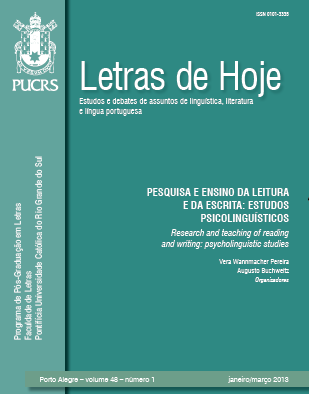Contextual effects on lexical access of polysemic and homonym words
Keywords:
Polysemy, Homonymy, Lexical Access, Context, Cross-modal primingAbstract
In this text we discuss how polysemous and homonyms words are accessed and what is the role of context during this access. Works by Swinney (1979) and Tanenhaus et al. (1979) support the hypothesis of multiple access, for which the context acts only late in the lexical access of ambiguous words. On the other hand, Tabossi and Zardon (1993) and Simpson (1994) support the hypothesis of selective access, according to which only the sense specified by context is accessed during the reading of an ambiguous word. To check the validity of these assumptions in the access of polysemous and homonyms words, we conducted three experiments of cross-modal priming. The results corroborate the hypothesis of multiple access. Regarding the relationship between polysemy and homonymy, our findings provide evidence for the hypothesis that polysemous and homonyms words are accessed in the same way, even if there are more senses associated with polysemies diachronically.Downloads
Downloads
Published
How to Cite
Issue
Section
License
Copyright
The submission of originals to Letras de Hoje implies the transfer by the authors of the right for publication. Authors retain copyright and grant the journal right of first publication. If the authors wish to include the same data into another publication, they must cite Letras de Hoje as the site of original publication.
Creative Commons License
Except where otherwise specified, material published in this journal is licensed under a Creative Commons Attribution 4.0 International license, which allows unrestricted use, distribution and reproduction in any medium, provided the original publication is correctly cited.






